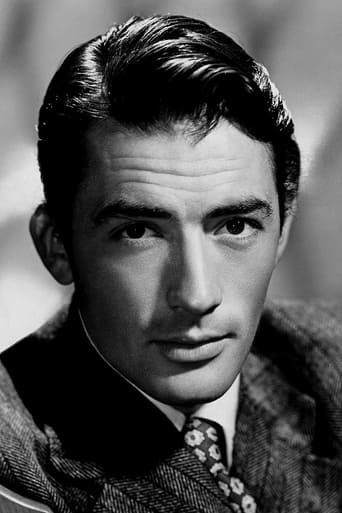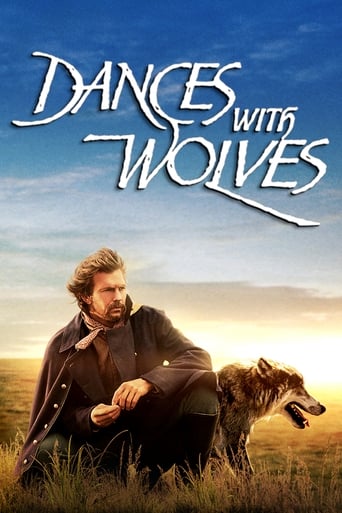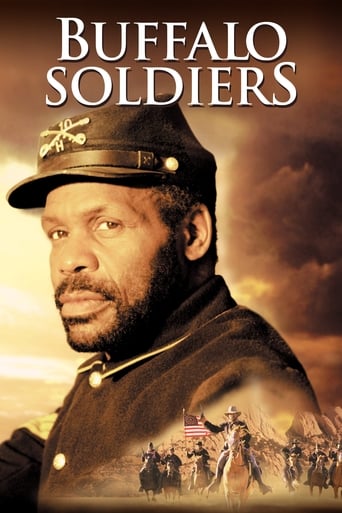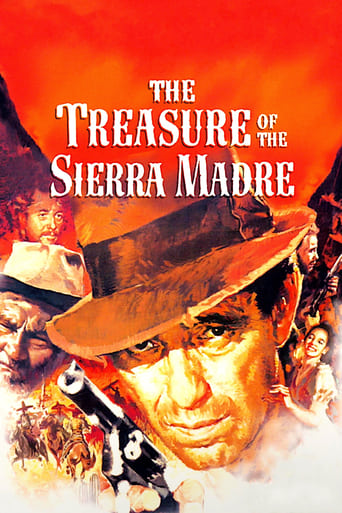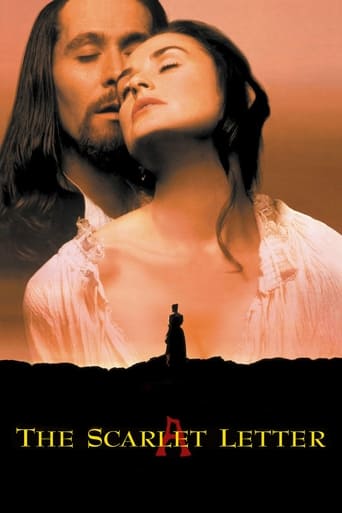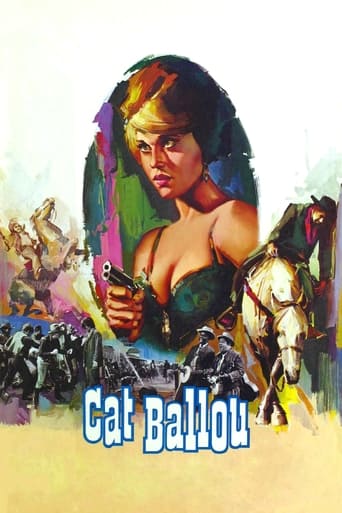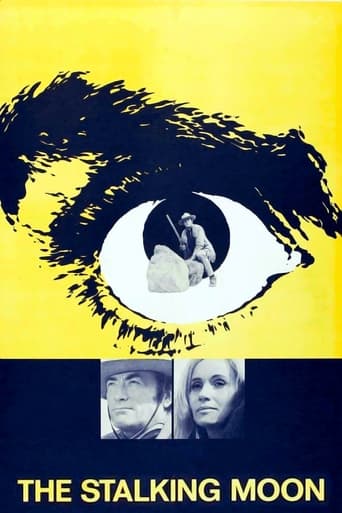
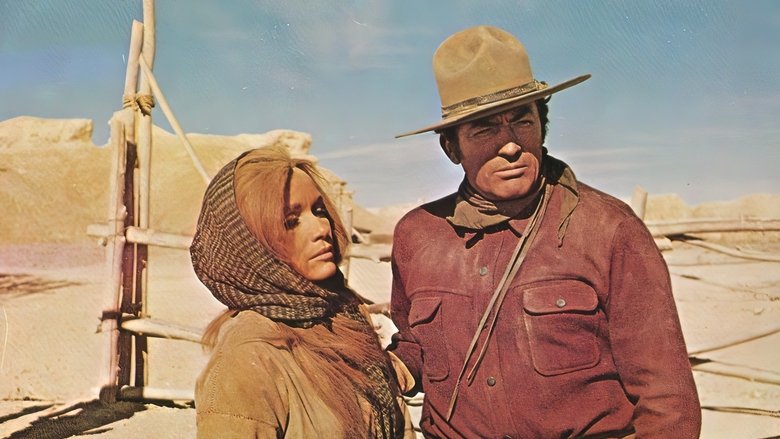
The Stalking Moon (1968)
While moving a group of Apaches to a Native American reservation in Arizona, an American scout named Sam Varner is surprised to find a white woman, Sarah Carver, living with the tribe. When Sam learns that she was taken captive by an Indian named Salvaje ten years ago, he attempts to escort Sarah and her half-Native American son to his home in New Mexico. However, it soon becomes clear that Salvaje is hot on their trail.
Watch Trailer
Cast
Similar titles
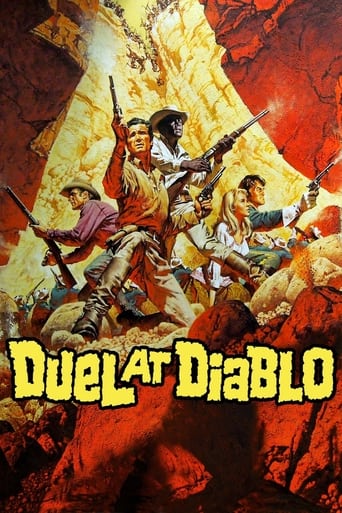
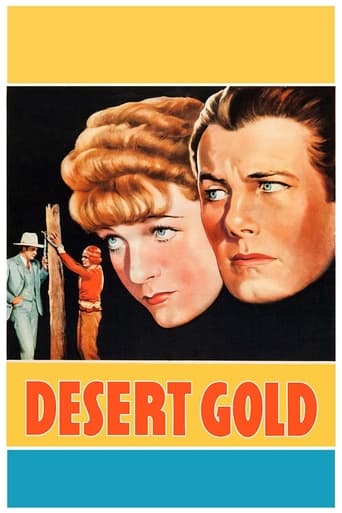
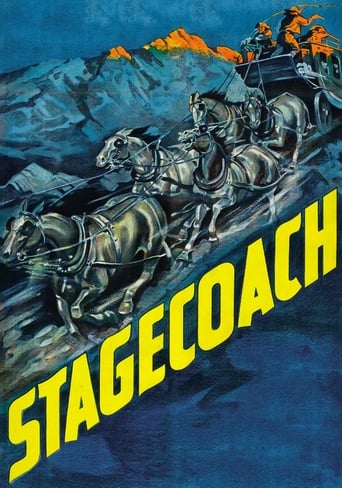
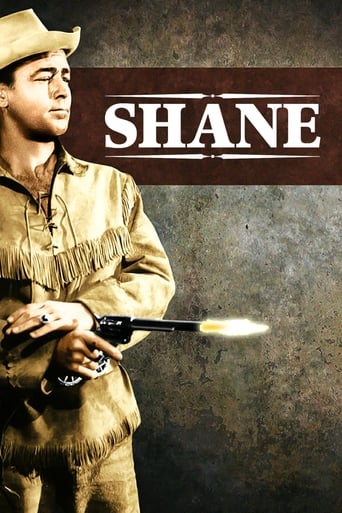
Reviews
Too much of everything
For all the hype it got I was expecting a lot more!
Story: It's very simple but honestly that is fine.
Although I seem to have had higher expectations than I thought, the movie is super entertaining.
Not your common variety of western, not even an action entry but a thoughtful look at the last days of the Indian tribes before the reservations took hold. It's a plausible story of these times that unfolds at a leisurely pace and builds to a suspenseful climax. Moon is a violent renegade Indian, hunting down those who have rescued his forcefully abducted white woman prisoner, along with his young son, as they attempt to move them to the safety of civilisation. Movie making veterans, director Robert Mulligan & director of photography Charles Lang, capture magnificent mountain vistas along with the murderous 'stalking' being performed by this Indian known as the ghost of the moon. Evocative music score by Fred Karlin adds atmosphere to this little remembered film. Should interest patient viewers of the genre & those who follow the careers of Gregory Peck and Eva Marie Saint - the interesting Robert Foster makes an impression as Peck's friend.
I thought that the song goes it's only a paper moon. Just kidding, but this disappointing film may have very well needed paper added to it.The dialogue is limited. I can understand that because the Eva Marie Saint part calls for a woman who had been kidnapped by the Indians years before and had a child with the chief.Found by the army and it's scout, Gregory Peck, the wife knows that her husband shall be on her tail and immediately flees with Peck. They are pursued all over and the bodies begin piling up wherever the Indian goes in his pursuit of the Saint character.The picture eventually comes as a cat and mouse venture between the Indian and Peck. With all that shooting occurring between them in the forest, I thought I was back in "Duel in the Sun."
Where to begin to describe this debacle?? The dialog is sparse and bad. The plot plods. The characters are two-dimensional and poorly developed. Their motivations are never made very clear.Mostly this film is lacking in emotion. Eva Marie Saint and her son never seem to be mother and child. She is clueless about where to go, and the audience is pretty clueless about whether she is motivated primarily to extricate herself from the clutches of Salvaje (for whom she has no love) or to remove her child from his Apache father and integrate him into the white man's world. She seems emotionless.The stoic young child utters no more than a handful of words the entire movie - much of which is in the Apache language. His character, though central to the plot, is an enigmatic, undeveloped non-entity.The only character in the film with less dialog is the hapless after-thought of a character, Ned. Peck has a relationship of such depth and trust with him that he has been sending him money for many years to buy cattle for his ranch. Yet when Peck gets there, he treats Ned like some passing acquaintance. I expected Ned to sit down at the dinner table with the others, but, instead, he is totally excluded and pretty much ignored.Peck, as usual, is likable enough, but his motives are never clear. Is he merely being a good Samaritan, or does he love her? Even more to the point - on what basis could he possibly love her? When did they form an emotional bond? In fact, none of these characters demonstrate any appreciable affection for one another, except Robert Forrester. His Nick is easily the most accessible and likable and best developed character in the film.The barely-glimpsed Salvaje is a ruthless, silent assassin. He is so devastatingly stealthy that he repeatedly overwhelms whole groups of victims as if they were the ones outnumbered, not he. Yet when he finally arrives at Peck's modest "ranch," he seems singularly incompetent. Moreover, his actions do not reflect any coherent plan. Why does he abduct Eva Marie Saint and drag her a few hundred yards into the wilderness to then just dump her? Why does he do so much running around instead of just staking out a good spot on the high ground that overlooks the cabin and picking off his victims as they come out into the open - as they repeatedly do! Why does he not keep the cabin under constant surveillance? Why does he not shoot Peck et al as they stand in the windows of the cabin at night, back-lit by a houseful of brightly shining lanterns?The script was apparently written by somebody who had only recently learned about the American west. Once Peck and Saint arrive at his "ranch" he spends most of his time afoot. Yet he continually wears spurs - ever tried to creep quietly around the house in boots and spurs? Good cinematic pseudo-suspense; bad plot hole.The plot is one-dimensional in the extreme. The end is never in doubt. The cycles of stalking and chasing become very repetitious. Suspense is completely eroded by inexplicable plot holes and stupidity. I kept looking at my watch, hoping that the end was drawing near.Beginning with an okay premise, this film fails to live up to any of its promise. A better script and film-maker might have provided some 3-dimensional characters and developed some relationships. This film might have explored the question of whether the stalker was Salvaje or Peck, et al. Had Salvaje been consistently cunning, the film might have been suspenseful. As it is, we know he and his shenanigans are only supposed to provide the semblance of suspense until he is eliminated and Peck and Saint and the wooden Indian boy live happily ever after. Having never seen any affection among the 3 survivors, their happy ending was a matter of indifference to me. I was disappointed that Nick didn't get to live happily ever after; he was the character that I liked best.Oh yeah, what does the title have to do with anything? There were a couple of scenes at night, but the the stalking and the chasing around occur as often during daylight as they do at night.
Gregory Peck is an army scout trying to take back with her people a white woman (Eva Marie Saint) that has been rescued from the Apaches that kidnapped her some years before. The point is that she has become a mother while in captivity and the fierce Indian father of the kid (appropiately called Salvaje) goes after them to recover his son no matter what.The plot is quite simple and yet this is not an ordinary western. It is full of suspense and menace, both very well handled by director Robert Mulligan. Salvaje is never at sight but he is always there as a real and deadly menace. The atmosphere is perfectly achieved and the picture is a thrilling experience all along in spite of a bit of excess in its duration; perhaps a 10 minutes cut might have been better.Mulligan was a skillful director, not very prolific, but with other fine films in his account such as the excellent "To Kill a Mockingbird" (also with Peck), the enjoyable "Summer of '42" and the fine thriller "The Other" unfairly underrated no doubt.With "The Stalking Moon" Mulligan tries his hand at westerns and he gets an interesting one that suits the genre's fans and surely thriller's fans too.
